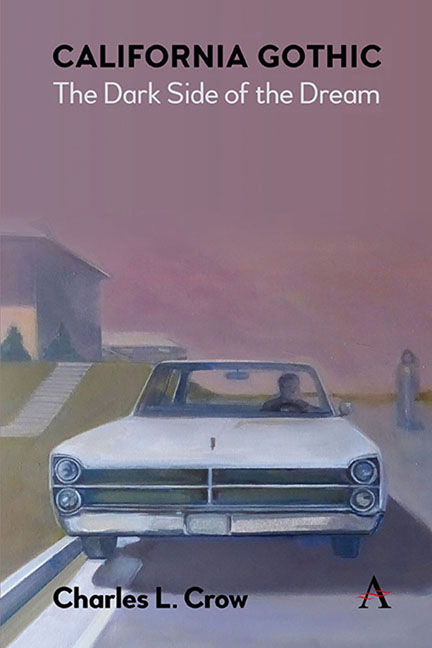Book contents
- Frontmatter
- Dedication
- Contents
- List of Figures
- Preface
- Acknowledgements
- 1 The Magic Island
- 2 Ambrose Bierce and San Francisco’s Gothic Frontier
- 3 Lost Coasts
- 4 Disease, Pandemics, and the Monstrous
- 5 The Shadow Line: Noir and California Gothic
- 6 California Ecogothic: What’s Buried in the Basement
- Works Cited
- Afterword
- Index
1 - The Magic Island
Published online by Cambridge University Press: 27 March 2024
- Frontmatter
- Dedication
- Contents
- List of Figures
- Preface
- Acknowledgements
- 1 The Magic Island
- 2 Ambrose Bierce and San Francisco’s Gothic Frontier
- 3 Lost Coasts
- 4 Disease, Pandemics, and the Monstrous
- 5 The Shadow Line: Noir and California Gothic
- 6 California Ecogothic: What’s Buried in the Basement
- Works Cited
- Afterword
- Index
Summary
Never take no cut-offs, and hurry along as fast as you can.
—Virginia Reed, survivor of the Donner TragedyCalifornia existed in the minds of Europeans as a literary construct before the idea was attached to a physical space.
The New World of the Americas was, at first, for Europeans, a constellation of islands. The islands putatively “discovered” by Columbus were seen through the lens of European tales and theories, both ancient and modern: the Terrestrial Paradise, Atlantis, Utopia, and fantasies about Amazon warriors. As stories came back to Europe of new lands in the Atlantic and Caribbean, they evoked yet more island fantasies. Shakespeare’s The Tempest (ca. 1610) was inspired in part by reports of Bermuda. Island by island, Spanish and Portuguese explorers were hoping they had reached the fabled Spice Islands of Asia. When it was clear that South America was a continent, not an island, they rounded its southern tip and sailed on, still hoping for island riches.
When Hernán Cortéz reached the tip of Baja California in 1536, he thought he had discovered another island. Cortéz named this island California after a recent romance novel that was the latest version of European island fantasies. Las Sergas de Esplandían (1510), by Garci Ordóñez de Montalvo, imagined an island ruled by the Amazon queen Califia, and peopled by deeply tanned athletic women clad mainly in gold jewelry. Thus was this existing literary idea of California (and the California Girl) was grafted onto the physical space.
The long dispute over whether California was an island or not, as Dora Beale Polk documents, began immediately and lasted—strangely—for about 200 years. Even though explorers in the 1500s had reached the mouth of the Colorado River at the top of the Sea of Cortez (the Gulf of California), Spaniards reluctantly gave up the belief in Island California, and kept producing maps that showed a link from the northern gulf, or the Colorado River, to the Pacific (Fig. 1.1). Finally, in 1747, Spanish king Ferdinand VI ended the dispute by proclaiming that “California is not an island” (p. 326). This was long after Spaniards had reached the real spice islands of Asia and had established the first truly global trade networks, linking China through the Philippines to Mexico and Spain.
- Type
- Chapter
- Information
- California GothicThe Dark Side of the Dream, pp. 1 - 10Publisher: Anthem PressPrint publication year: 2024



